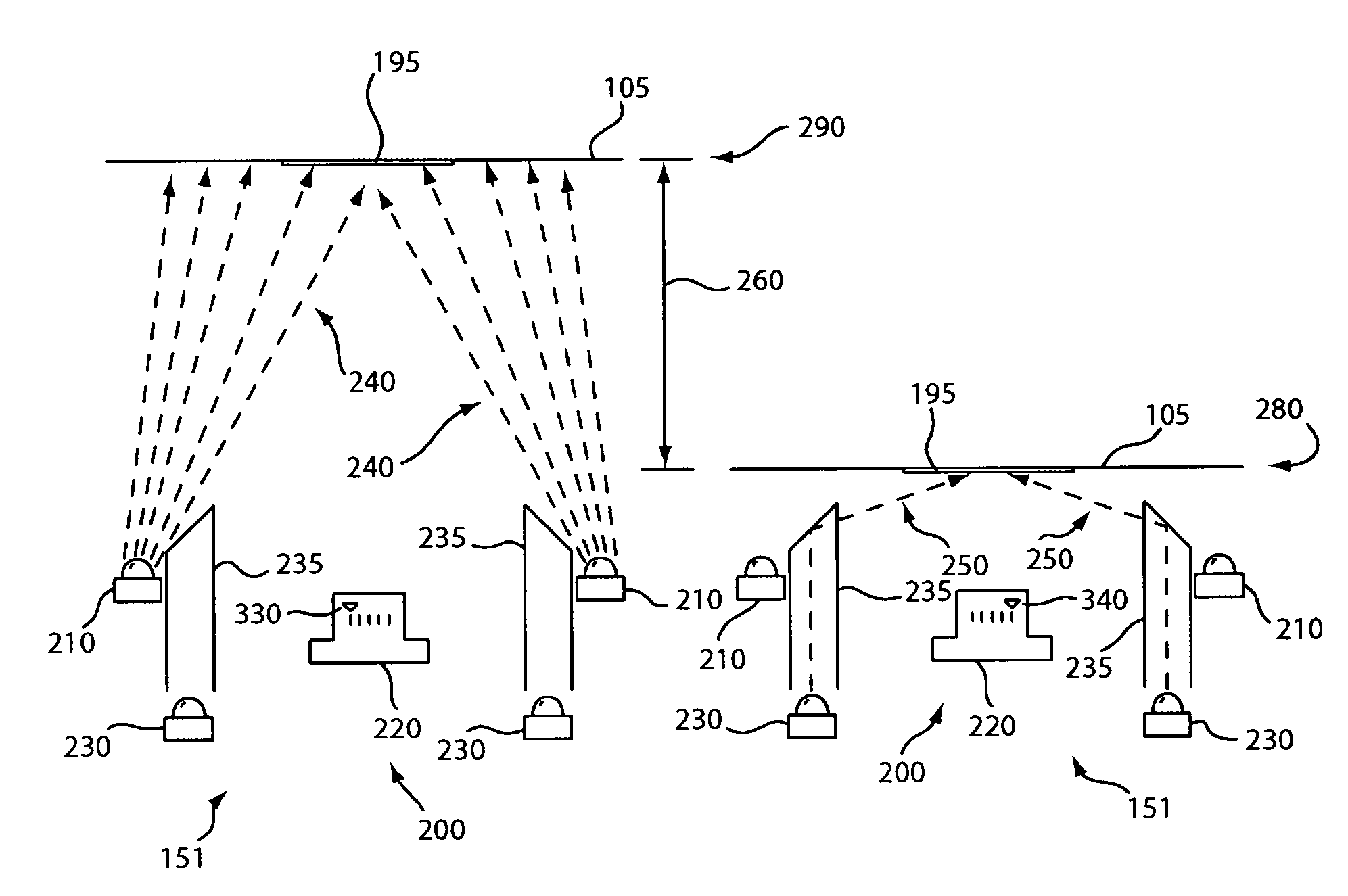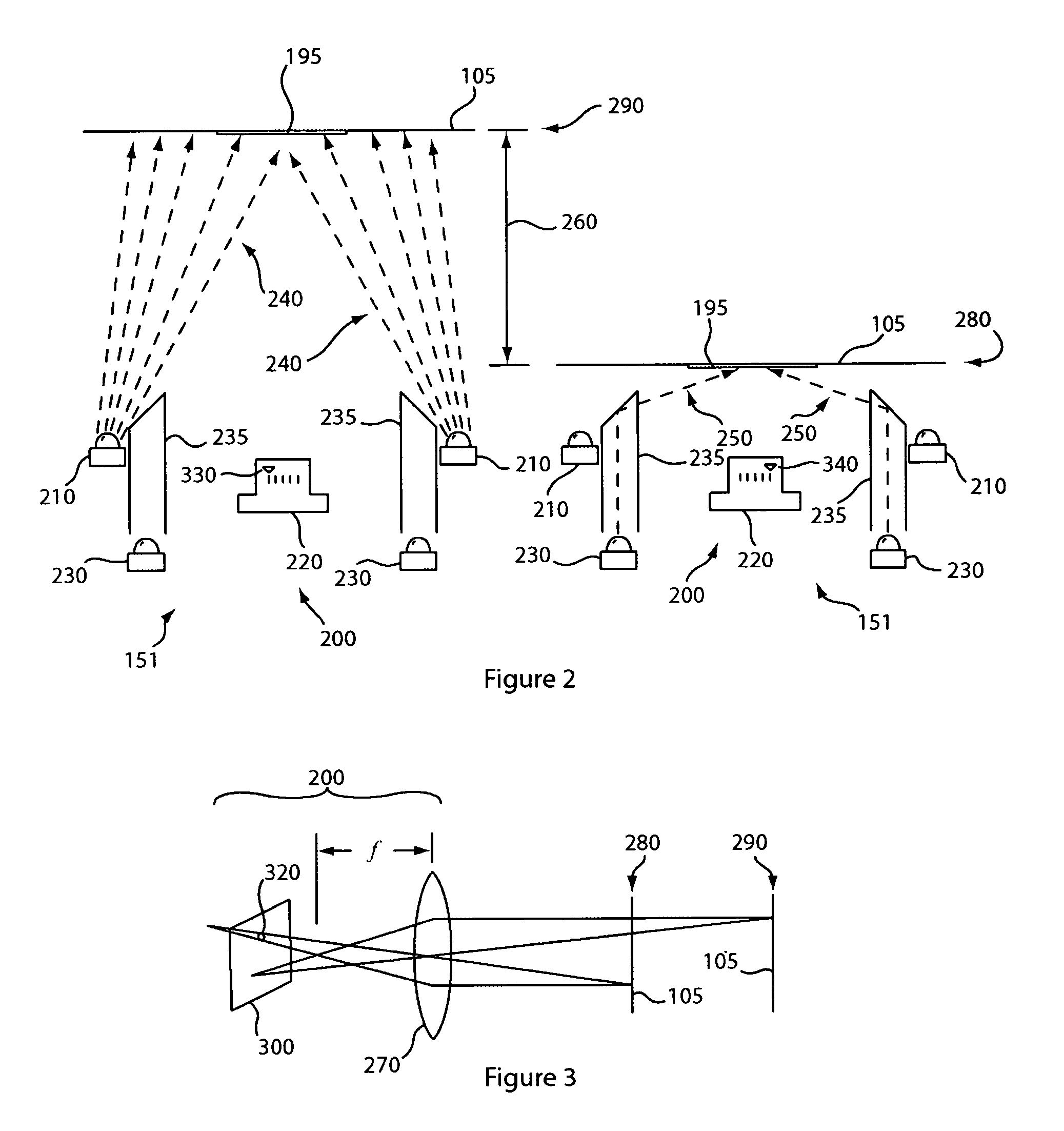Selectable focus direct part mark reader
a direct part and reader technology, applied in the field of machine vision systems and symbology readers, can solve the problems of inability to intuitively choose bright field, dark field, direct or diffuse light, and inappropriate use of highly reflective bright field illumination
- Summary
- Abstract
- Description
- Claims
- Application Information
AI Technical Summary
Benefits of technology
Problems solved by technology
Method used
Image
Examples
Embodiment Construction
[0036]FIG. 2 depicts a cross sectional view of the image formation system 151 of a direct part mark reader according to the present invention. When configured to read a symbol 195 using bright field illumination, the bright field illuminators 210 project high-angle bright field illumination 240 at the object 105 in the bright field reading position 290. The reflected illumination captured by the imager 220 having a first focus setting 330 is passed to the on-board processor 109 (not shown) for decoding. When configured to read a symbol 195 using dark field illumination, the dark field illuminators 230 project illumination into a light pipe 235 that directs low angle dark field illumination 250 on the object 105 in the dark field reading position 280. The reflected illumination captured by the imager 220 having a second focus setting 340 is passed to the on- board processor 109 (not shown) for decoding. The relative position 260 of the object 105 is shown where the object is position...
PUM
 Login to View More
Login to View More Abstract
Description
Claims
Application Information
 Login to View More
Login to View More - R&D
- Intellectual Property
- Life Sciences
- Materials
- Tech Scout
- Unparalleled Data Quality
- Higher Quality Content
- 60% Fewer Hallucinations
Browse by: Latest US Patents, China's latest patents, Technical Efficacy Thesaurus, Application Domain, Technology Topic, Popular Technical Reports.
© 2025 PatSnap. All rights reserved.Legal|Privacy policy|Modern Slavery Act Transparency Statement|Sitemap|About US| Contact US: help@patsnap.com



